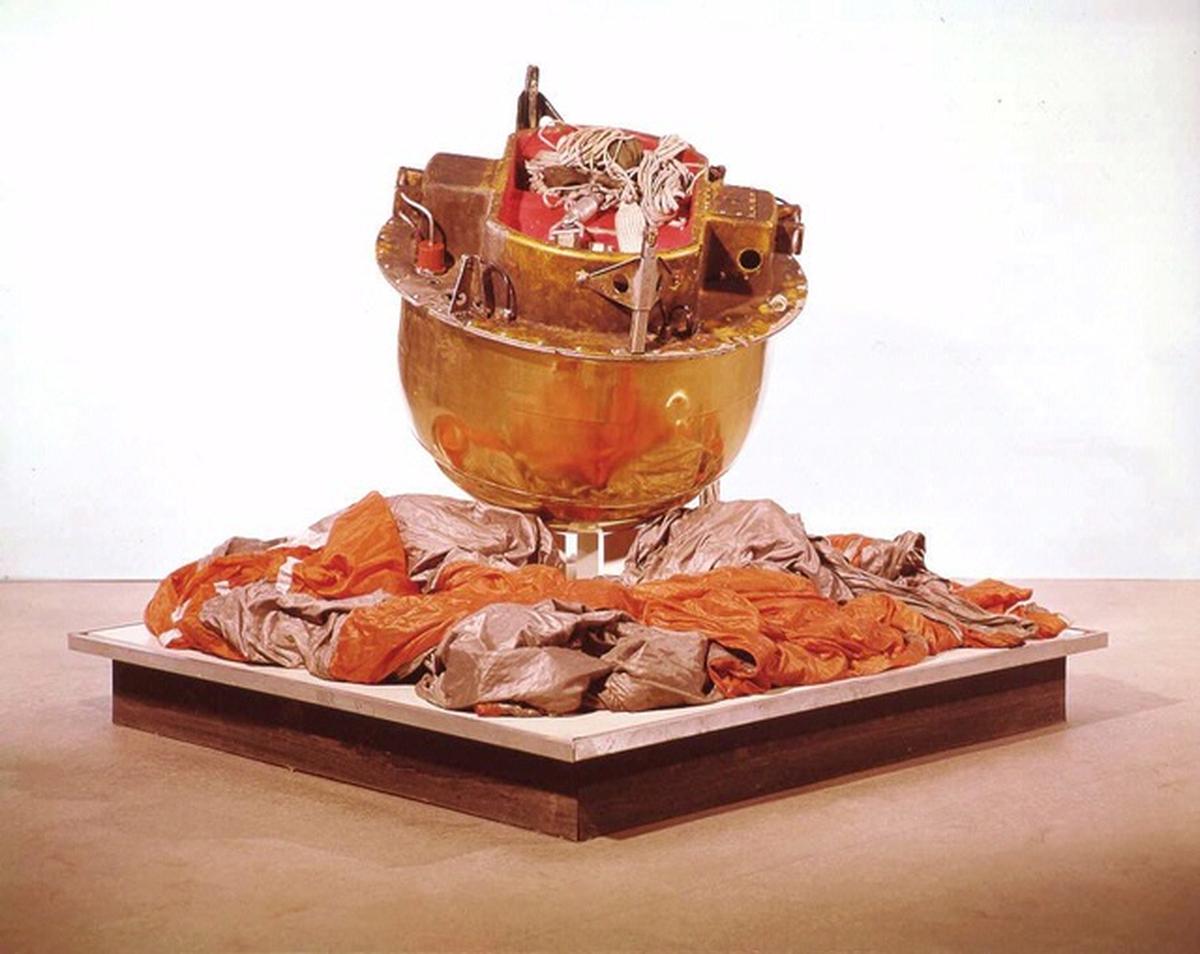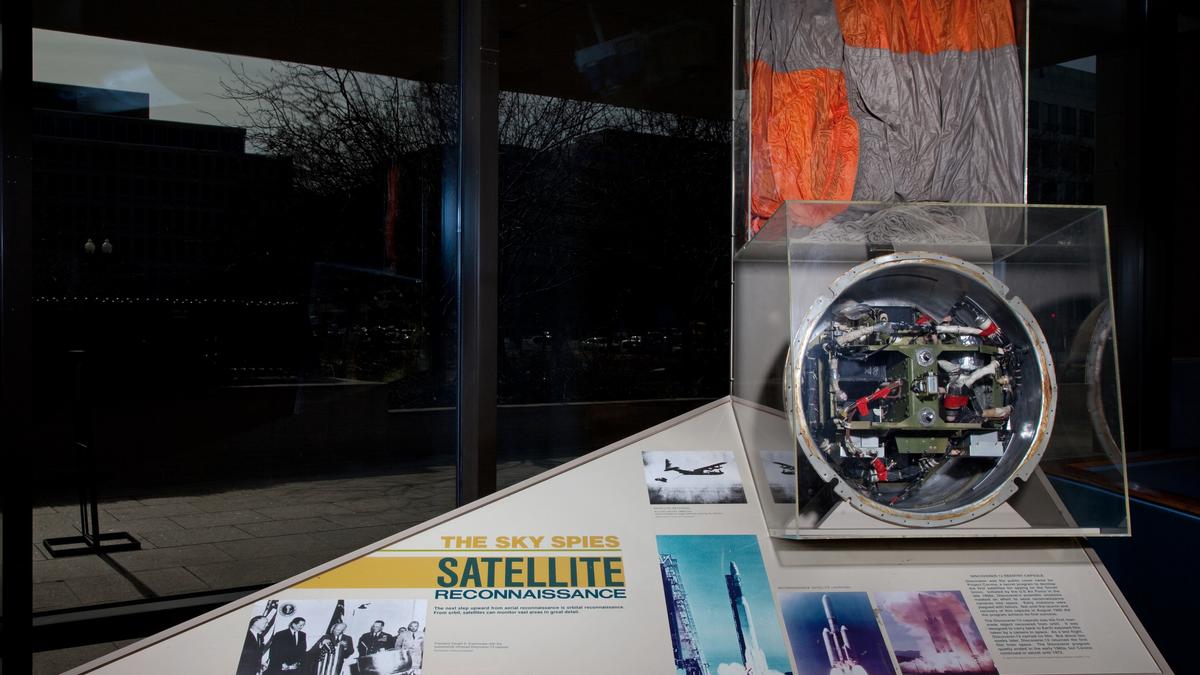Tech talk
The Discoverer 13 was an Earth-orbiting satellite designed to test a number of aspects. Bear in mind that this was in 1960, the early years of the Space Age. Among other things, the Discoverer 13 was designed to test engineering techniques and to attempt deceleration and reentry through the atmosphere. If the deceleration and reentry went as per plan, there was also the task of recovering the instrument package from the sea.
Out of everything that this satellite was designed to carry to the orbit, the most important was the 120 lb (54.4 kg) recovery capsule. This capsule, which was bowl-shaped in configuration, contained an American flag. While the bowl part of it was 22 inches in diameter and 27 inches deep, the conical afterbody increased the total length to nearly 40 inches. Out of the 120 lb, a monitoring system accounted for 40 lb, or one-third of the total.
The launch, which took place on August 10, 1960, was on a Thor-Agena from Vandenberg complex. The first stage separated at an altitude of about 130 km and the Agena placed the satellite in a near-polar orbit – 250 x 705 km, 82.9 degree orbit.
The reentry capsule
The satellite system, which included a telemetry system, a tape recorder, a horizon scanner, and receivers for command signals from the ground in addition to the reentry capsule, completed 17 orbits before the command for the recovery sequence was given. This command was sent on August 11 from a ground station on Kodiak Island, Alaska.
Reentry capsule of Discoverer 13. Notice the bowl-shaped configuration.
| Photo Credit:
Transferred from the United States Air Force for National Air and Space Museum
The command triggered the Agena to pitch down 60 degrees before the recovery vehicle was ejected using small springs. The vehicle spun up for stability, achieved using a cold gas system. Once the Thiokol retrorocket mounted at the end of the afterbody fired, the velocity was reduced by 400 m/s and then the spin system despun (a mechanism or system that counteracts the inherent spinning motion of a spacecraft, allowing a specific part to remain stable and pointed in a desired direction) the spacecraft.
Before it started heating up owing the the reentry, the orbit ejection subsystem dropped off, leaving the heat shield and the capsule. A small parachute was deployed at at altitude of 15,000m, before the radio beacon and strobe lights were activated. The heat shield was then released and after further stabilisation, the larger parachute was deployed. Throughout this time, the monitoring system sitting inside the capsule kept reporting on select events like the firing of the retrorocket and jettisoning off the heat shield.
Around 11:30 p.m. UT (1:30 p.m. local time) on August 11, the capsule splashed down in the Pacific Ocean 610 km north-north-west of Honolulu, Hawaii. The responsibility of retrieving the capsule fell upon the U.S. Navy and their ship, the Haiti Victory, sent out a helicopter for the same.
Frogmen jumped into the water from the helicopter in the vicinity of where the capsule had splashed down, before attaching a collar to the capsule to aid its retrieval by the helicopter. By 3:30-4:15 p.m. local time, the capsule was taken and brought back to the Haiti Victory, before it made its way to the Pearl Harbor.
The first human-made object ever recovered from orbit was thus retrieved successfully. The public celebration that followed included presenting the flag that was inside the capsule to President Dwight Eisenhower on August 15.
As for the Agena stage, it reentered the atmosphere months later. On November 14, it burned up in the atmosphere during reentry.

This is the Discoverer 13 reentry capsule along with the capsule cover and parachute.
| Photo Credit:
Transferred from the United States Air Force for National Air and Space Museum
Secret revealed
This remained the story of Discoverer 13 for years – three-and-a-half decades, to be particular. It was only in 1995 that documents pertaining to this programme were declassified, thereby making it public knowledge.
According to these documents, the Discoverer programme, of which Discoverer 13 was a part, was a classified operation. It was managed by the Advanced Projects Research Agency of the U.S. Department of Defense and the U.S. Air Force.
The primary objective of this classified operation was, in fact, to develop a film-return photographic surveillance satellite. This was planned in order to assess how fast Soviet Union – their Cold War foes – was producing long-range bombers and ballistic missiles. In addition to this, the U.S. were also eager to find out where they were being deployed. Further, they were looking to take photos over the Sino-Soviet bloc to replace the U2 spyplanes.
The Discoverer programme was actually part of the secret Corona programme. The photoreconnaissance satellite programme was employed to make maps and charts for the Department of Defense, as well as other U.S. government mapping programmes.
For decades, however, the whole programme was presented as something else, with only a select few knowing the ulterior motive. The story that was woven was about a programme to orbit large satellites to test satellite subsystems; investigating the communication and environmental aspects of sending humans to space; and included carrying biological packages for return to Earth from orbit. While it wasn’t entirely false, it wasn’t entirely true either, as revealed by the documents in 1995.
Even though Discoverer 13 carried only diagnostic instruments and didn’t have any cameras or film, its success paved the way for future missions that did just that. It started off immediately as the Discoverer 14 with cameras and films was launched a week later (August 18).
By February 1962, 38 Discoverer satellites had been launched. The satellite reconnaissance programme continued until 1972 as the Corona project. By May 1972, more than 120 Corona satellites had flown successfully and managed to photograph the Soviet Union, China, and other nations. More than two decades passed after this before a formal acknowledgement of reconnaissance programmes, past and present, was made.
Images, used for educational purposes, have been transferred from the United States Air Force for Smithsonian National Air and Space Museum.
Published – August 10, 2025 12:19 am IST
